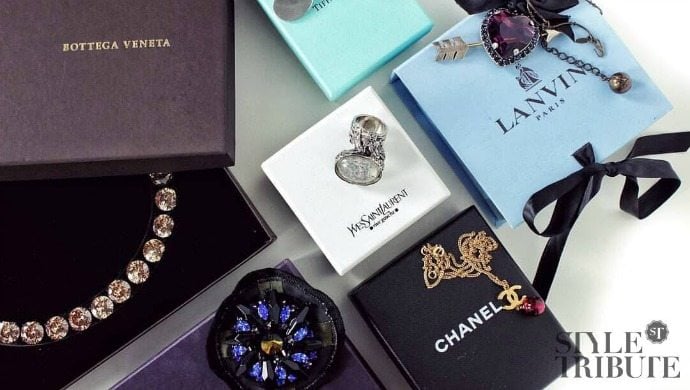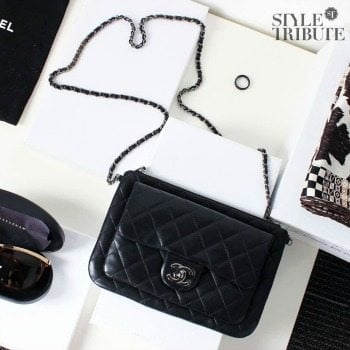Team is probably 50 per cent of the chances of your startup’s success. You can only afford to have stars. Fire fast and don’t make up excuses like giving second chances, she says

Stephanie Crespin, Founder of StyleTribute
Stephanie Crespin — half Belgian and half French — have always wanted to start her own venture. After four years at P&G, she felt she was ready to take the leap. She chose Singapore over Europe to try her luck at entrepreneurship by launching StyleTribute, an online platform for second-hand branded luxury clotting and accessories.
Things were not as easy as she expected in the beginning. In Crespin’s own words, “the challenge of the second-hand luxury market is that it requires not just great knowledge and understanding of the luxury category and fashion, but also it also requires excellent business acumen and understanding of the challenges and dynamics of marketplaces.”
But thanks to her hard work, the company steadily grew, bagged some good customers, and raised US$1 million in funding. e27 sat with Crespin to listen to her entrepreneurial journey, the mistakes she committed, and the learnings she has made.
Below are the edited excerpts:
When did the entrepreneurship bug bite you? Can you narrate your entrepreneurial journey for our readers
I’ve always wanted to start my own venture it was just a matter of time and opportunity. After four years at P&G, I felt I was ready to take the leap. I was living in Bucharest at that time and my husband in Belgium. We decided to take a map of the world and we listed Singapore as being the top cities in which we wanted to live and I felt it was the right city to start my business.
Arriving in Singapore, I was missioned by an entrepreneur to launch a concept store for luxury brands, a bit like club21. However, after having studied the retail landscape and done the financials BA, I realised the project represented too high risk and current trends were not in favour of such a concept.
Nonetheless, it gave me the chance to better understand the Southeast Asian (SEA) landscape and understand the consumer fashion goods opportunities and challenges. SEA consumers had a huge appetite for brands, and as the purchasing power and middle class was rapidly growing, their attraction for luxury goods was rising. The second-hand market was booming in Europe and the US, whereas in Singapore it was starting to appear with shady brick and mortar stores. There was a white space in affordable luxury and a white space in luxury online.
Being a fervent vintage and second-hand shopper and seller, the business model hit me and appeared to be in total adequacy with the socio-economic trends I was observing.
Why did you leave your country for Singapore to launch a startup? What opportunities did you see there?
I was born in Tokyo and lived between Japan and Thailand most of my childhood and teenage years. Thus my heart was still beating for Asia and it felt like home.
Europe is a mature market, with high competition and many business models have already been thought of and tried out. Europe is not exactly boasting a booming economy and the growth figures aren’t exactly the most exciting. Whereas Singapore represents the spring board to SEA where lies so many business opportunities and possibilities.
The second-hand luxury goods is a tough-to-execute industry. How did you manage to capture a good market share in Singapore?

StyleTribute
When I arrived in Singapore, there was a range of second-hand brick and mortar stores, often hidden at the back of a mall, sometimes in MRTs. They often appeared a bit shady as they lacked the luxurious shopping environment and sophistication of high-end designer retail.
Besides that, many people were starting to sell their personal items on Facebook or Instagram but there was nothing very structured or appealing, that had the standards of the luxury category. What was missing was a credible platform that successfully captured the essence of the luxury category.
The challenge of the second-hand luxury market is that it requires great knowledge and understanding of the luxury category and fashion but it also requires excellent business acumen and understanding the challenges and dynamics of marketplaces.
Also Read: The mentality of ‘sink or swim’ was ingrained in me at an early age: Orami’s Shannon Kalayanamitr
The success of StyleTribute can be attributed to the passionate and talented team that has been built and that gathers all the necessary skills both in fashion/luxury and in tech and digital. A team with both sides of the brain: the left side of the team, creative and sensitivity to fashion and our client’s needs and the right side, data driven and with deep technical expertise.
Can you explain the working model and business model? What is the current traction?
We have a hybrid model, we offer both the white glove service and the DIY service. What is common to both business models is that we physically authenticate and check all items that are sold through our website.
To date, business is primarily driven by its ‘white glove’ service for customers selling 10 or more items. A StyleTribute representative handles the client relationship from the initial contact: collecting the items from the seller’s home, authenticating the pieces, arranging for a photo shoot, uploading the items on the site and managing payment.
The white glove service has been an important strategic pillar of the business, enabling us to (a) set strong foundations for the business and the brand — extremely curated assortment, high standards in customer service, building our product expertise (as we hold them in-house); (b) establish solid/close relationships with our sellers and better understanding of their needs; and (c) building a valuable database of high net worth individuals constantly bringing in new unique pieces.
The DIY model on the other hand enables customers to sell individual pieces. This makes the site more accessible and available to a wider audience, allowing StyleTribute to grow their assortment a targeted 10x. Sellers can easily take a photo of the item and sell through the site. Once sold, StyleTribute will collect and authenticate the item through a rigorous examination, offering an unlimited authenticity guarantee. The DIY model currently accounts for 20 per cent of the business, and we expect this segment to expand quickly.
How did your P&G experience help you in your startup journey?
At P&G, I was taught frameworks, methodologies and structure to grow a business. I was also taught leadership skills as I had to coordinate different functions and a team. At P&G, data collection and data analysis is key to drive insights and then to take key business decisions. This data driven approach has been valuable in my startup journey, as the whole concept of the lean start-up is to iterate your product through test and learn.
P&G, as we know it, is also a great marketing school and I was taught the importance of deep down consumer understanding and the importance of brutally simple communication/message.
After four years at P&G I felt I had built the necessary experience and acquired the necessary tools that would enable me to start my own business. What I meant about lacking confidence is that when I decided to take the leap, I still had many doubts and fears. However those fears of failing were won over by drive and passion to become an entrepreneur. There’s never a perfect time and taking the leap into start-up world, means discovering something completely new and reinventing yourself.
How do you compare Singapore’s startup ecosystem with that of Belgium? Can you walk me through the Belgium startup scene?

Stephanie Crespin
I can’t comment on the Belgium startup scene as I have never been entrepreneur in that market. Some of the main differences between SEA and EU I would list is: despite the current startup and exit disappointments, there remains a lot of available investment money in SEA.
More potential in SEA to replicate existing successful business from EU and from the US. Whereas in EU and the US, the markets are much more mature with strong competition.
I think the SEA VCs in the past years have been very focused on growth with much less attention to the bottom line. They were after growth at any cost. I’ve often been surprised that investors solely looked at the growth rate of the company without challenging and questioning the evolution of the marketing spending. But the mentalities have shifted, and investors are putting way more attention to the bottom line, profitability and overall unit economics.
In comparison, EU has some key advantageous over SEA when it comes to scalability. SEA is very fragmented: huge cultural differences, logistical and payment challenges. It makes it more difficult for companies to scale their operations in SEA. Investors are looking for proof that startups are able to expand to other markets and go cross border.
Also Read: Thai customers are much smarter than the websites out there: masii Co-founder Maxwell Meyer
Fortunately for the ASEAN startups, we are seeing many signs of improvements such as the ties forming between the different national post services in different SEA countries, facilitating the cross border circulation of goods
You have a presence in Malaysia and Singapore, and are now planning to spread the wings across SEA. How are you going to tackle the cultural and linguistic challenges in the region?
We are in Singapore and Malaysia, we are looking at Indonesia, Thailand, Hong kong and even Australia.
We have been progressing though iteration and testing. Hence our expansion is no exception. Our next market choice will be based on how well we perform in that market, what our traction is. These results then need to be balanced with the logistical complexity the market expansion presents.
Also Read: WWW: Winning Women on the Web
Some countries will indeed need more localisation than other. This will require us to hire the right people to help us understand with the cultural sensitivities and integrate in our shopping experiences those cultural differences.
How do you plan to tackle the online payments issues in markets like Thailand and Indonesia when you expand?
Our current focus remains Singapore and Malaysia and we still have some time ahead of us before expanding to Thailand or Indonesia. In the meantime, the credit card penetration is growing at a rapid pace and new revolutionising payment methods are appearing. For example, Thailand is introducing a new money-transfer system, called PromptPay, which “will require users to link a mobile phone number or national ID number to their demand deposit account to use the service”. PromptPay is one example of how to drive to turn the society into a cashless one.
How was the experience of starting up solely? What have been your key learnings? How did you face the tough times in your lonely startup journey?
Even though I am sole founder and it has been difficult at times, I’m very grateful to have built a strong team and attracted employees that have set the corner stones of StyleTribute. Employees that have considered StyleTribute as their own venture and acted as owners and founders of the business.

StyleTribute
Recruiting is one of the hardest thing in the job. But you need to maintain extremely high bar and you need to hire slowly. The team is probably 50 per cent or more of the chances of success of your start-up… you can only afford to have super stars in your team.
The advantageous of being sole founder is the agility it confers you. No division or disagreements over crucial business decisions and thus gives you great rapidity in moving forward and implementation.
How is it being a woman in tech? Do you think there is gender disparity in the startup world?
I personally had difficulty to attract tech talents. Not sure if it was really the heels and the crazy glasses which made them run off or the fact that the start-up is in fashion, but I had a lot of difficult to attract my first tech hires. I was fortunate enough to hire our CTO a year ago, who has been a key contributor to StyleTribute.
As a woman founder, I get great credit for being both a mother and an entrepreneur. While in reality, it’s just as difficult being a father and entrepreneur. It’s not as if being a man, you need to do less efforts being a family man and showing your love/support to your wife and kids.
The big difference is that we women have nine months looking like a whale. I found it difficult not to apprehend the perception investor’s, business partners could have of you. I was often concerned they would not consider me as a credible entrepreneur.
What advice would you give to budding entrepreneurs in Asia?
It’s not a customers job to know what he wants. Balance feedback vs vision.
Before I started StyleTribute, I spent days on Orchard surveying random people. Asking them about second-hand and surveying them on their intention to buy second-hand/the whole business idea behind StyleTribute. If I just based myself on the raw data, I would have probably never launched StyleTribute.
On paper, it looked like an incredibly bad idea. I was told it was unhygienic, people shared their concern over authenticity that could not be overcome, people shared the believed in ghosts and spirits attached to items that had belonged to other people, I was even told that Asians only liked brand new.
Of course, these are real barriers, but it does not mean that you can’t overcome them or create a product, a service or execute in a way to go around them. What encouraged me to continue and believe in it was my vision, my gut-feeling and intuition I got from reading in between the lines of their answers.
Recruiting is one of the hardest things in the job. And finding your co-founder is even more difficult. Have an extremely high bar, hire slowly. Team is probably 50 per cent of the chances of success of your startup. You can only afford to have Stars. Fire fast and don’t make up excuses like giving second chances.
Do every possible job, especially the customer facing one. It’s the only way to fully understand what your customers are after and what they value, what’s going wrong in your company and your weak points, it will shed light on business opportunities and give you ideas on ways to improve it.
Also Read: Unitus Impact’s Shuyin Tang is on a mission to improve livelihoods in Asia’s emerging economies
What was the biggest mistake you committed while building the startup?
My biggest mistake was probably in hiring the wrong talents, trusting them and getting too quickly overly excited about them. I tend to be over optimistic and positive about people, quickly trusting in people which has put me in uncomfortable situations and blind me from being objective and seeing quickly enough their genuine performance.
It’s never easy and pleasant to terminate someone, but in a startup with five, 10 or 20 employees, every person counts and is a key to defining the success of your company. You can only afford go-getters, positive thinkers, hard workers and talented people. I should have fired some people much more quickly rather than procrastinating and giving myself false excuses on doing so.
The post Startups need to balance customer feedback with own vision: Stephanie Crespin of StyleTribute appeared first on e27.